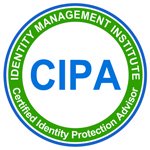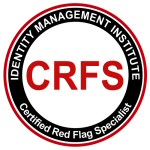Consumer Responsibility
When we think about identity theft prevention, consumer responsibility can not be overemphasized. Most people think that identity theft happens because of other people or businesses who mishandle their personal information and there is nothing they can do to prevent identity theft. This assumption can not be further from the truth because there are actions that if consumers take or avoid, they can reduce their exposure to identity theft. Below are 5 tips to put you in charge of your identity protection against theft and disclosure:
1. Stop making private information public. If you are using social media to share information with others, make sure you understand what you are sharing and who can see it. If you must absolutely share some information and can limit who can see it depending on the application that you are using, that’s great, and if not, think hard about the information that you would not normally share with others or would not want anyone to see. Consider your options and the consequences of identity theft when using any social media website including the extent of your use.
2. Don’t create or maintain excessive number of accounts. Many people casually create many online or offline accounts which they hardly ever need or use. Examples include email accounts, social media profiles, bank accounts, and applications when visiting new doctors or participating in sweepstakes. Although some of these accounts are needed and may require less information, others are useless and require more personal information. Think before you apply for one more account or fill out another application. Businesses may be careless when it comes to protection consumer information, but it is consumer responsibility to asses whether it is needed
3. Use less cards and more cash. We all have and use an excessive number of credit or debit cards even for smaller transactions. When it comes to the risk of our credit card information being stolen or disclosed during use, it makes no difference whether we used to card to purchase a cup of coffee or a television. The risk is the same. Use cash or store gift card which you can periodically load with cash or a credit card and use it multiple times without using your credit cards.
4. Pass code security is consumer responsibility. Some accounts may require passwords and dictate the length, format and change frequency of the passcode. However, you have the power to select your own password, and decide whether you want to write it down, share it with others, or use it when you use unsecured public networks which all add to your identity theft risks.
5. Don’t carry too many things around. Frequently carrying too many items around with you such as credit cards, insurance cards, and other written down information increases the risks because they can be stolen or lost. This risk is even greater when you don’t know what you are carrying with you which will extend the recovery, reporting and replacement period.
Learn more about consumer responsibility in the identity theft prevention section.








